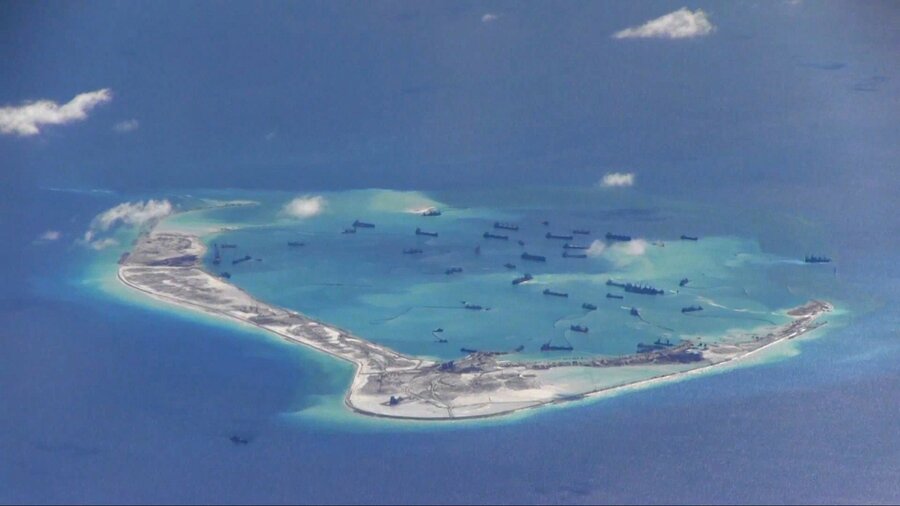In wake of US patrol, US and China hold talks on South China Sea
Loading...
The US and Chinese navies will hold high level talks today, after six months of escalating tension in the South China Sea, reports Reuters.
US Admiral John Richardson and Chinese Admiral Wu Shengli will speak via videoconference two days after a US guided missile destroyer cruised within 12 nautical miles of a Chinese manmade island in the Spratly archipelago (see map) that China claims to be its territory.
The USS Lassen’s sail-by of one of five mid-ocean reefs that China has turned into islands is seen as something of a turning point in the back and forth between the US and China, a "seminal test of wills," as the The Age in Australia puts it.
Last week, China's Rear Admiral Yang Yi promised a “head on blow” if the US challenged its territorial claim, which no other nation in the region accepts.
Yet so far, Beijing has only protested and asked that "the US side not to continue down the wrong path," as the Associated Press reports. China this week called in the US ambassador, leading to the joint naval meeting today in which China will present its "solemn position on the US vessel's entry without permission."
The US sail-by had been foreshadowed by Pentagon officials for weeks following a White House summit between President Obama and Chinese President Xi Jinping. At that meeting, the Chinese leader stated that the islands, former reefs that the Chinese have built up, were not for military purposes, even though at least two have landing strips. Defense Secretary Ashton Carter stated on a trip to Japan that the US regularly conducts freedom of navigation operations in the South China Sea, where an estimated $5 trillion in trade pass through annually.
China’s state-run Xinhua news agency this week described the USS Lassen as “threatening China’s sovereignty and security interests,” and part of an attempt to contain China.
Many Asian experts argue that China’s assertive behavior in the South China Sea, especially toward the Philippines and Vietnam, has pushed most of the regional nations towards the American security camp. The Philippines is a US treaty ally.
Reuters reports today that the US decision to send the USS Lassen took place only after a protracted and often intense internal Pentagon discussion on Chinese reclamation, and frustration with the pace of the White House response, which dates to last spring:
Obama, who has sought to avoid confrontations with U.S. rivals and reduce direct U.S. involvement in wars, had to carefully weigh the need to take action with the risks of sparking an unintentional armed conflict that could have severe diplomatic and economic consequences.
Under his "pivot" to Asia, 60 percent of the U.S. Navy's assets will be deployed in the Pacific region by 2020, in a challenge to China's rapidly growing maritime power and ambitions.
Writing in The Age, John Garnaut notes that the US had “done its homework” in the South China Sea by carefully creating alliances and moving slowly and patiently to call China's "bluff."
“Leaders throughout the region have framed this burgeoning tussle as a battle between a rules-based order and a philosophy of might-is-right,” he writes.
Moreover, writes Mr. Garnaut, a former Beijing-based correspondent, while Chinese generals would "have us believe that their president, Xi Jinping, is so unhinged that he would risk nuclear Armageddon to preserve his country's nationalistic pride," China did little more than "murmur" after the Lassen's sail-by.
"With a bit of strategy and co-ordination, the US and its allies and partners have shown that China has neither the will nor the capability to simply do as it pleases. And Xi Jinping's PLA has shown itself to be opportunistic, and audacious, but not the unstoppable force that it is often made out to be."





